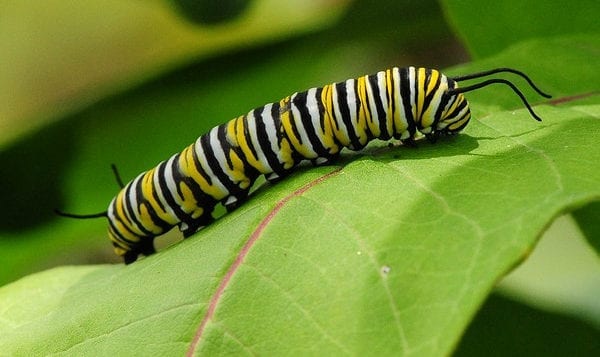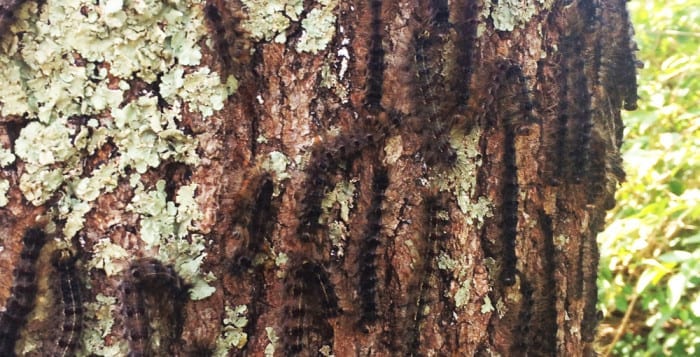By Ellen Barcel
Often when I’ve gone out to pick some parsley, I’ve found some parsley caterpillars on the stems. The question always becomes: When finding a caterpillar, to remove or not to remove it from the plant? As a kid, I liked playing with the little brown fuzzy ones. As a kid, I also remember my father removing tomato hornworms. So, the question is: Which, to gardeners are beneficial and which should we remove?
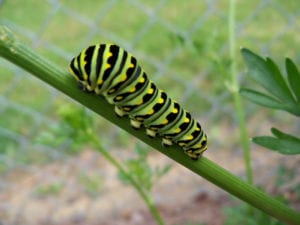 The two caterpillars that look the closest to me are the monarch butterfly caterpillar and the parsley caterpillar. Both feed on local plants and both turn into beautiful butterflies, a definite plus in my garden. The monarch obviously becomes the beautiful black and orange butterfly. Plant lots of butterfly weed (Asclepias tuberosa) for its food, a native plant with beautiful orange flowers. Cultivars include white, purple and bicolor flowers in addition to the native orange.
The two caterpillars that look the closest to me are the monarch butterfly caterpillar and the parsley caterpillar. Both feed on local plants and both turn into beautiful butterflies, a definite plus in my garden. The monarch obviously becomes the beautiful black and orange butterfly. Plant lots of butterfly weed (Asclepias tuberosa) for its food, a native plant with beautiful orange flowers. Cultivars include white, purple and bicolor flowers in addition to the native orange.
The parsley caterpillar turns into the beautiful blue and black eastern swallowtail. Since I grow a large pot of parsley each year, I’m more than willing to share a bit with this caterpillar. But, it can be a nuisance to professional parsley farmers.
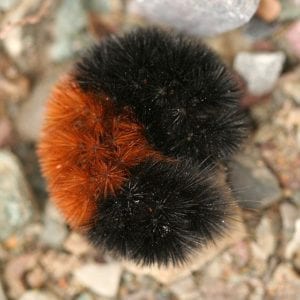
The black and brown wooly bear caterpillars (Pyrrharctia isabella) are funny. Picked up they roll up it a ball. It emerges from of its egg in the fall, freezes over winter and turns into a light brown and black-spotted tiger moth in spring. It feeds on a whole variety of foliage. According to old lore, it’s a predictor of a harsh winter if the brown strip (not all have a pronounced strip) is wide, mild if it is narrow. I’ve read that there are even wooly bear festivals with weather prognostication (move over Holtsville Hal), crafts and races.
Tomato hornworms are green with small black and white spots. Their heads are larger and they are attracted to tomatoes — a plant that they can devastate. They also like related plants like peppers, potatoes and eggplants, which are members of the nightshade family, Solanaceae.
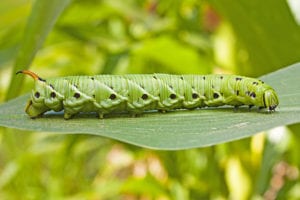
The tomato hornworm moth emerges in late spring, just in time for the nice tender shoots of its host plants. Handpicking is the easiest way to get rid of them for the home gardener. When my father removed one, it was covered in white eggs — wasp eggs. He didn’t realize that the wasps would become a natural control to this pest (as it was its dinner) and quickly removed the hornworm with its eggs. For those into companion plantings, it is said that dill, basil or marigolds can be planted among your tomatoes to control these hornworms.
Outside of the gypsy moth caterpillars (a real pest), you mainly see caterpillars alone or in groups of just a few. Make sure you identify each one before removing it from your plants.
Ellen Barcel is a freelance writer and master gardener. To reach Cornell Cooperative Extension and its Master Gardener program, call 631-727-7850.

